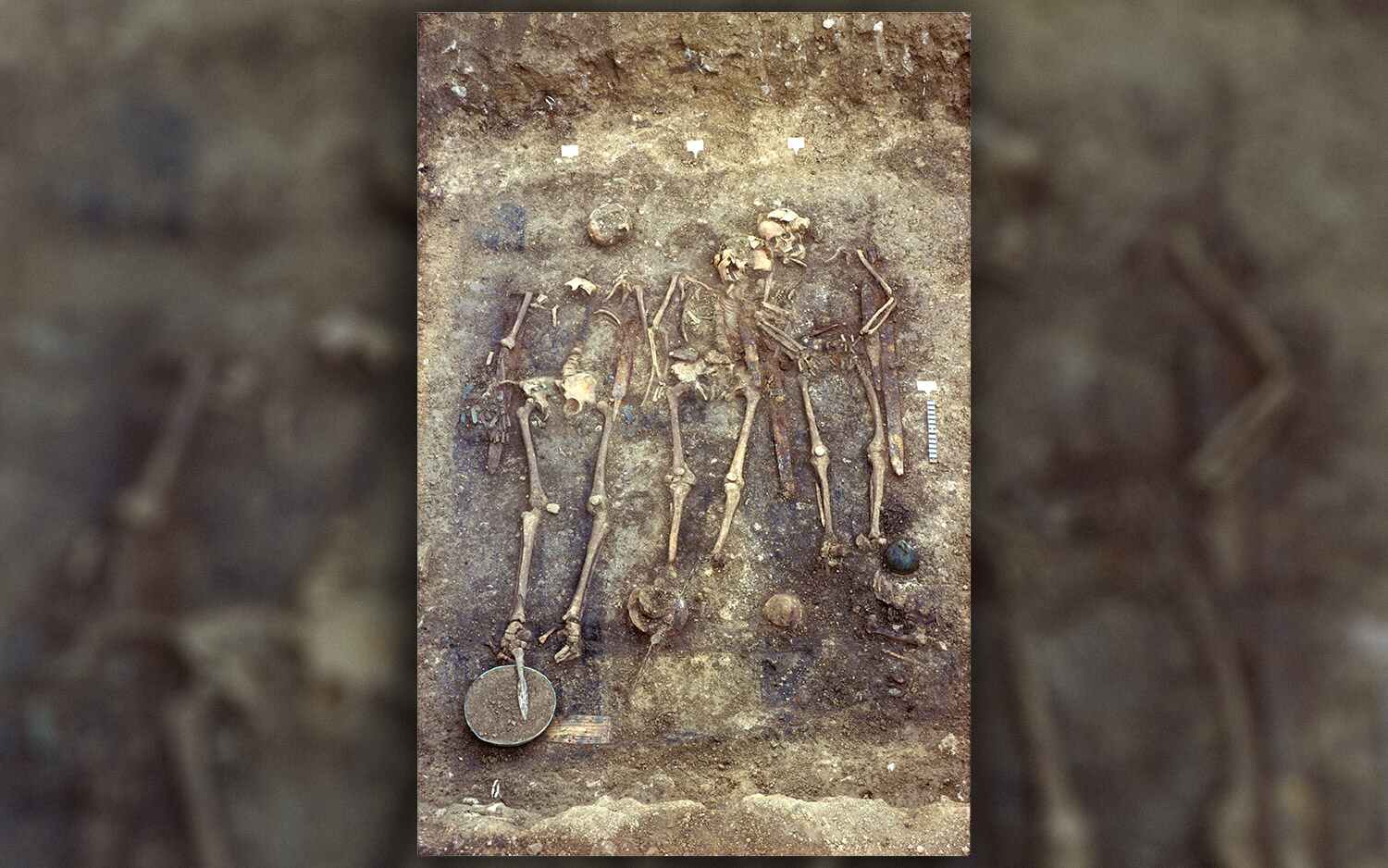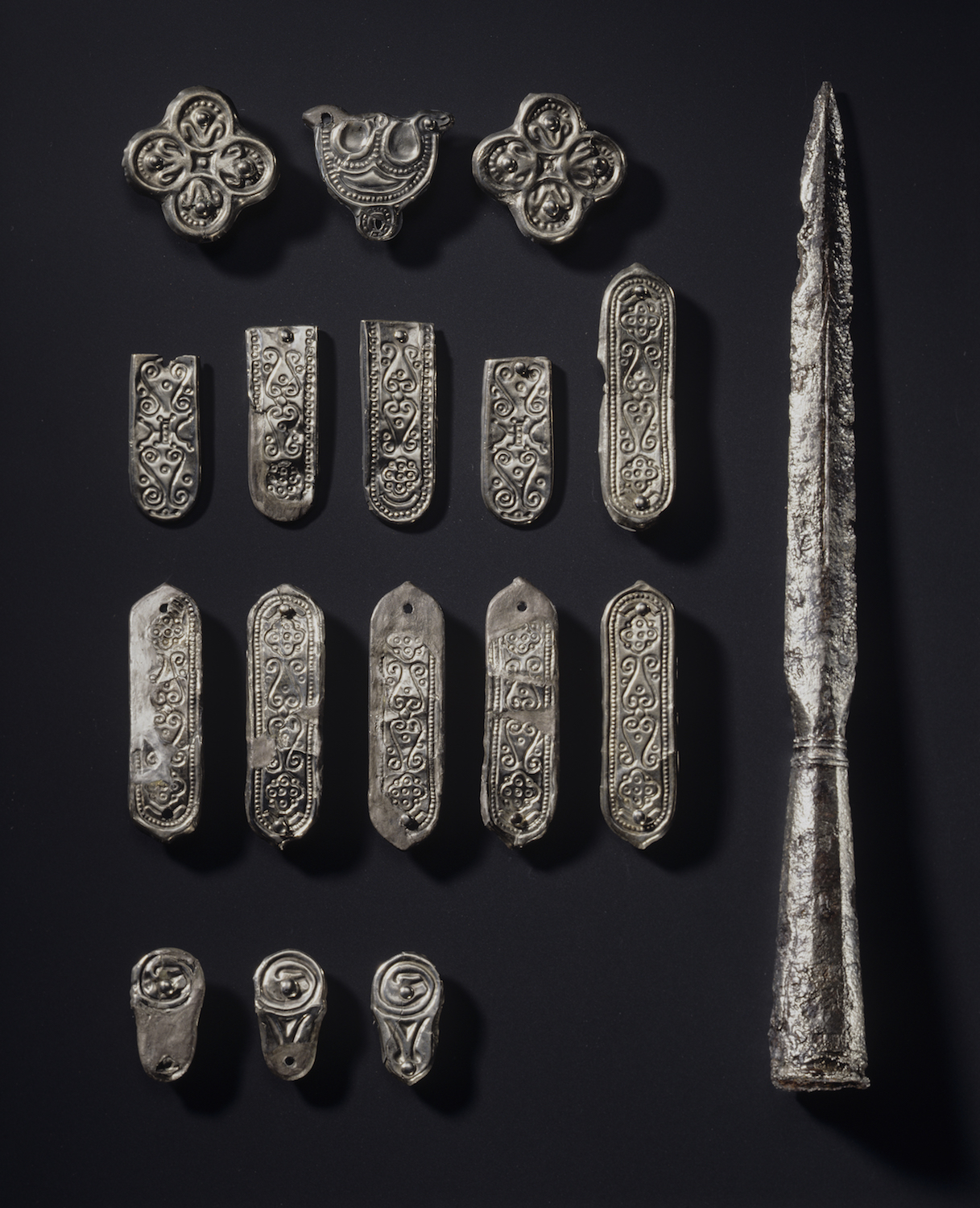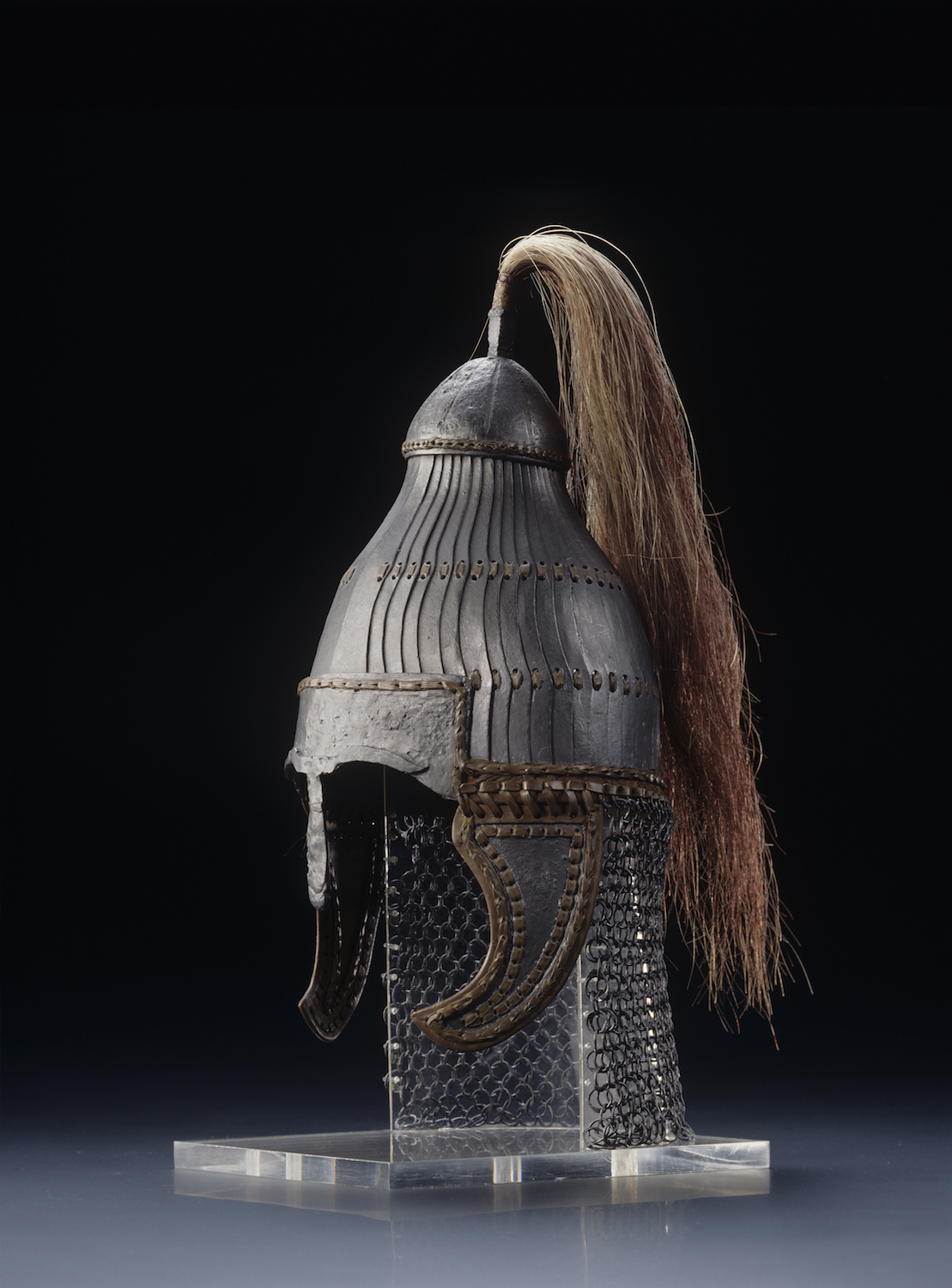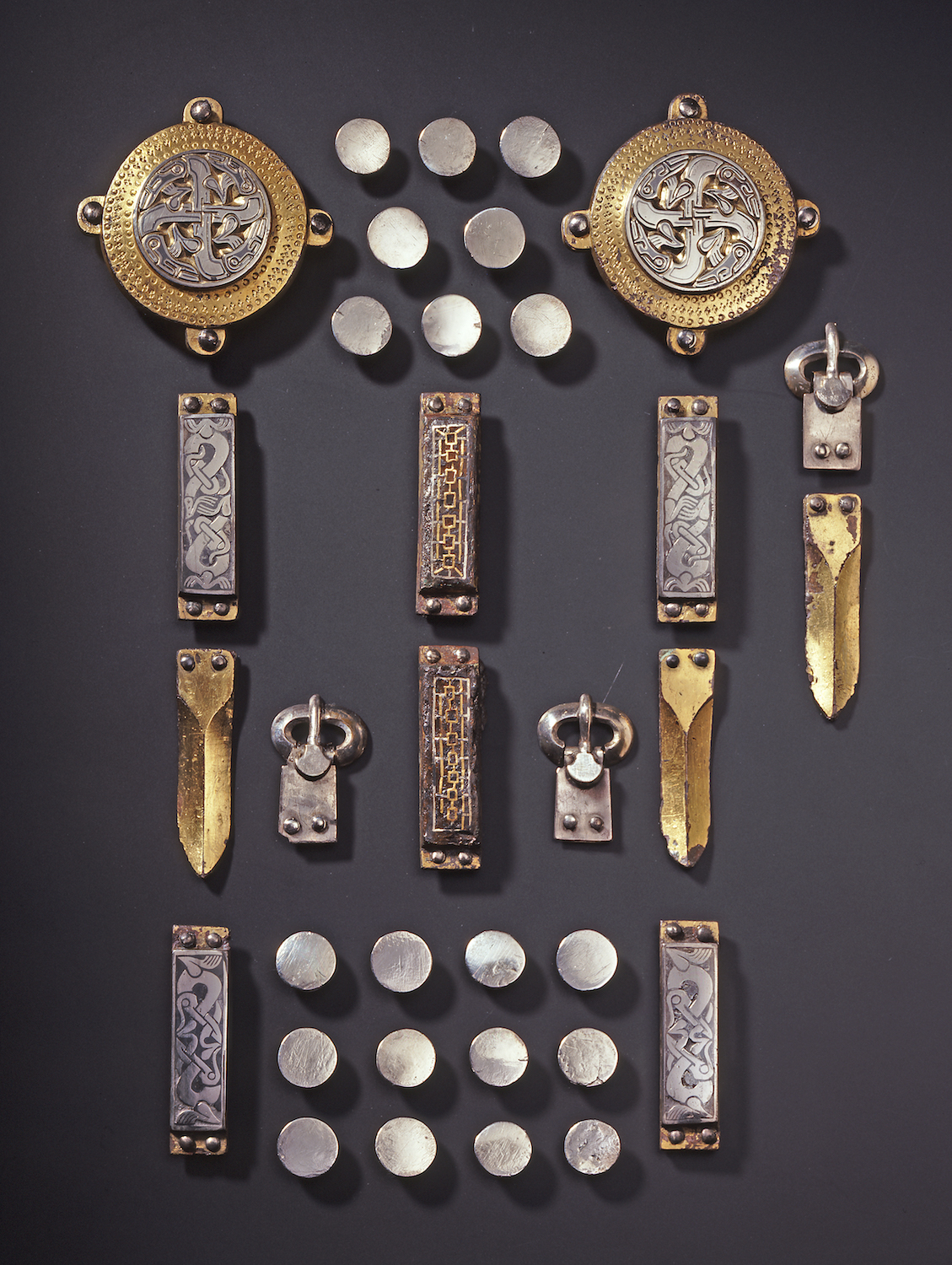Adopted Warriors? Genetic Tests Reveal Unexpected Relationships in Medieval Graves

A dozen lavish medieval graves holding the remains of 13 people have finally spilled their genetic secrets, now that researchers have constructed a family tree of the people buried there.
Researchers initially found the early medieval burials — which hold the bodies of 10 adults and three infants — in 1962 in the southern German city of Niederstotzingen. The contents of the graves dazzled archaeologists, who immediately got to work studying the ornate armor, bridle gear, jewelry and swords buried with the individuals. But they couldn't figure out how these people (some of whom were warriors) were related.
Now, a new genetic analysis of eight of these individuals reveals that five of them were direct relatives, but the other three were not related at all. [Photos: Medieval Skeletons Unearthed Near Saint's Tomb in England]
It's possible that some of these unrelated people were "adopted as children from another region to be trained as warriors, which was a common practice at the time," the researchers wrote in the study, which was published online yesterday (Sept. 5) in the journal Science Advances.

Germanic tribes
The graves in question belong to the Alemanni, a group of Germanic tribes who lived in the region spanning modern-day Germany, France, Switzerland and Austria. After the Alemanni were defeated by Clovis I, the first king of the Franks, in A.D. 497, they became part of the Duchy of the Merovingian Kingdom. When this happened, the Alemanni's funerary practices changed; they began burying their households (known as familia) in richly furnished graves, called adelsgrablege.

This particular adelsgrablege was likely used by the same family across two generations, from about A.D. 580 to 630, the researchers said.
Even though some of the buried people weren't genetically related to the familia, the common burial suggests that they "were raised with equal regard in the familia," the researchers wrote in the study. In effect, these medieval burials indicate that both kinship and fellowship were held in equal regard, the researchers said.
Sign up for the Live Science daily newsletter now
Get the world’s most fascinating discoveries delivered straight to your inbox.
The genetics analysis on the eight individuals also indicated that six of them were likely from northern and eastern Europe, while two were likely from the Mediterranean region, the researchers found. Another genetic analysis on 11 of the individuals (which included the eight already studied) revealed that they were likely male, the researchers added.
The presence of women's jewelry in one of the graves suggests that it held females at one time, but these women were likely exhumed and possibly reburied, the researchers said. Male-only burials weren't uncommon in the Merovingian Kingdom, they noted, likely because these burials were for male warriors or nobility.

Among the northern and eastern European group, five were second-degree relatives, meaning they shared great grandparents. Moreover, an analysis of the strontium and oxygen isotopes in their teeth (an isotope is a variation of an element that has a different number of neutrons in its nucleus) revealed that these individuals were born locally, in Germany. But, even though they were closely related, four of the five had "culturally diverse grave goods," the researchers said.
These findings show that in Niederstotzingen, "diverse cultural affiliations could be appropriated even within the same family across just two generations," the researchers said in the study.
The study sheds light on Niederstotzingen, which is one of the most famous early medieval burial sites in Germany, said Christian Meyer, an osteo- and funerary archaeologist at OsteoARC, the OsteoArchaeological Research Center in Goslar, Germany, who was not involved in the study.
The results "prove once more that early medieval society was indeed fluid and adaptive," Meyer told Live Science in an email. "Every complex analysis that leads to significant new results should also make us re-evaluate pre-conceived notions about kinship, grave goods and overall burial rites. It is always much more complicated and nuanced than it may appear at first glance."
Original article on Live Science.

Laura is the archaeology and Life's Little Mysteries editor at Live Science. She also reports on general science, including paleontology. Her work has appeared in The New York Times, Scholastic, Popular Science and Spectrum, a site on autism research. She has won multiple awards from the Society of Professional Journalists and the Washington Newspaper Publishers Association for her reporting at a weekly newspaper near Seattle. Laura holds a bachelor's degree in English literature and psychology from Washington University in St. Louis and a master's degree in science writing from NYU.









